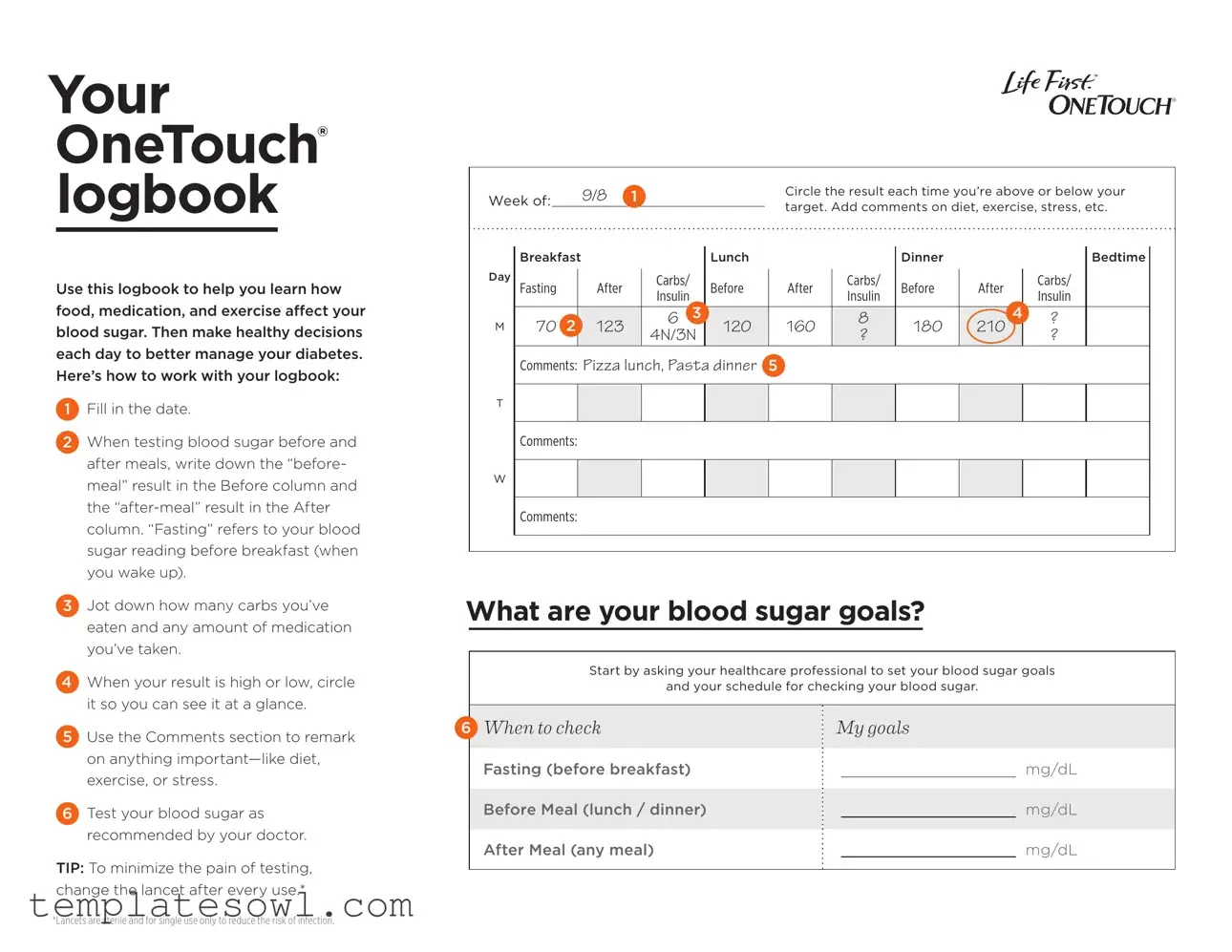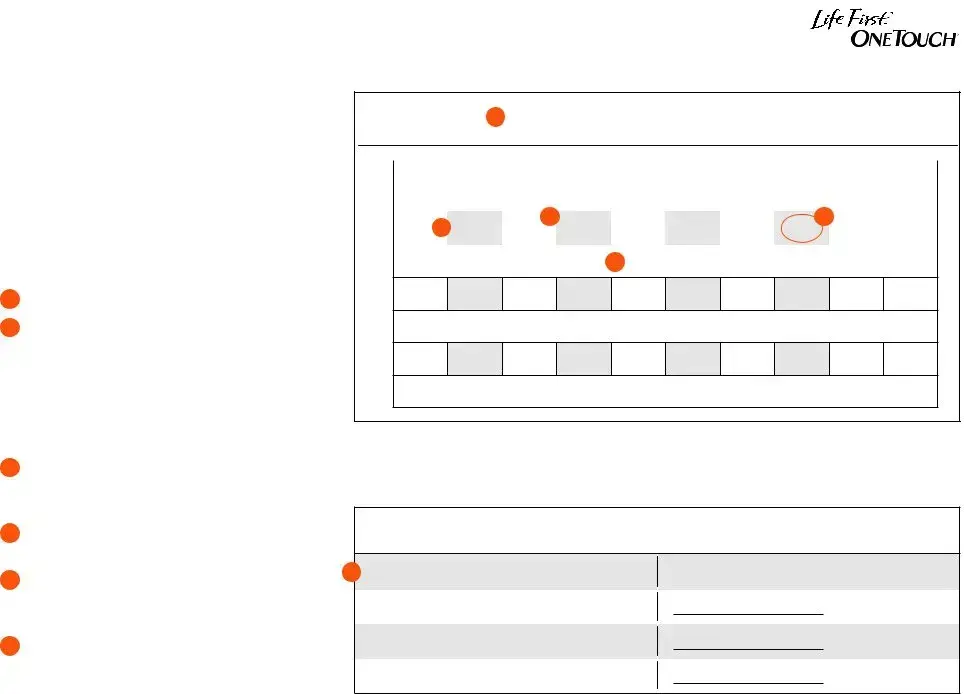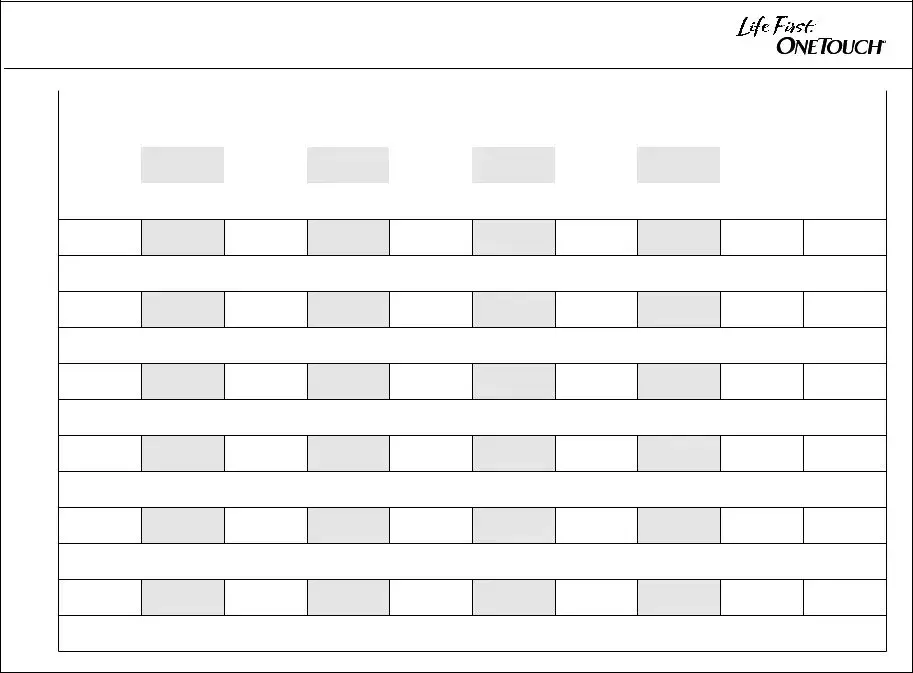What is the purpose of the OneTouch® logbook?
The OneTouch® logbook helps individuals manage their diabetes by tracking how food, medication, and exercise affect blood sugar levels. It enables users to make informed decisions about their health on a daily basis.
How do I fill out the logbook sheet?
Begin by entering the date at the top of the logbook sheet. For each meal, record your blood sugar results in the appropriate columns: write the "before-meal" results under Before and the "after-meal" results under After. Additionally, include the number of carbohydrates consumed and any medications taken.
What does "fasting" mean in this context?
"Fasting" refers to the blood sugar reading taken before breakfast, shortly after waking up. This measurement is important for understanding your baseline blood sugar level.
How should I note high or low blood sugar results?
If your blood sugar results are above or below your target, circle those numbers. This way, you can easily identify any trends or concerns when you review your logbook later.
What should I write in the Comments section?
The Comments section is a space for you to note anything relevant, such as dietary choices, exercise habits, any stress you may be experiencing, or how you felt throughout the day. This information can provide context for your blood sugar readings.
How often should I test my blood sugar?
You should test your blood sugar as often as recommended by your healthcare professional. This may vary based on your specific needs and treatment plan.
What tips can help when using the lancet for blood sugar testing?
To minimize pain during testing, consider changing the lancet after each use. Remember that lancets are sterile and intended for single use only, which helps reduce the risk of infection.
How do I set blood sugar goals?
To determine your blood sugar goals, consult with your healthcare professional. They can help establish your targets and outline a schedule for checking your blood sugar based on your individual health needs.
What should I keep in mind while using the logbook?
Use the logbook consistently and accurately. Recording your food intake, medication, and exercise can provide valuable insights and help you manage your diabetes more effectively. Regularly reviewing your entries can guide your healthcare decisions.


